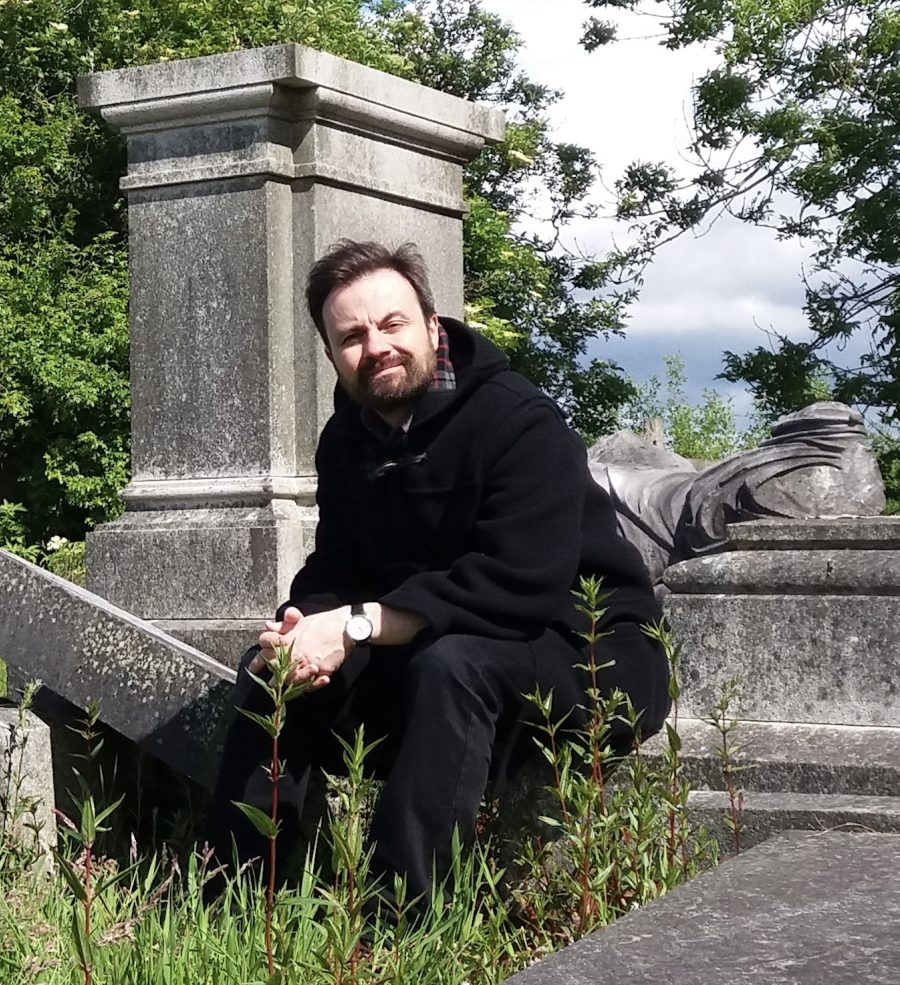Steeple to steeple

Peter Ross - Steeple Chasing: Award-winning author Peter Ross on the churches of Britain, bringing us a wealth of stories from the dark secrets hidden in unassuming-looking parish churches, to London's mighty cathedrals with their histories of fire and love.
Steeple Chasing Q&A
Steeple Chasing takes us into the heart of Britain’s Christian churches – and other institutions – exploring not just their architecture, history and art but their role in society and individual lives. In Scotland alone we meet a dryly witty Benedictine monk, one of the small band at the 13th-century Pluscarden Abbey, the Edinburgh Bishop who lost his faith but wants his body to rest in his former church before his funeral. Then there is the young Polish priest who guides author Peter Ross round the crumbling ruins of a Catholic seminary – built in the 60s and abandoned after just 14 years. The book also has sections devoted to everything from the medieval Sheela-na-gig carvings (depicting women stretching open their vaginas) found all over Britain to the multitude of church cats, like Doorkins Magnificat, who prowls and preens herself in Southwark Cathedral.
This is definitely not ‘a guide to British churches’ – what was your mission in writing it
Steeple Chasing isn’t a guidebook, although I keep hearing from readers that it has inspired them to visit some of the places I write about, such as Old Saint Paul’s in Edinburgh which has a wonderful painting by Alison Watt, and St Peter’s in Upwell, Norfolk, with its magnificent medieval carvings of wooden angels in the roof. It makes me very happy that people are taking the book on the road like that, especially given that I started writing it at a time when, because of the pandemic, it was difficult to travel.
I wrote it, in part, for myself. I had been feeling bleak about the state of the world, not hopeful for the future, and so thought to console myself – and hopefully readers – with a deep dive into the past. I wanted to lose myself in these beautiful old churches. I thought the world would look better through stained-glass eyes.
There is a poignancy about the book, is it ultimately reflecting the fading of faith?
It’s important to me that the book can be enjoyed by everyone: those with a Christian faith, those of other faiths, and people with no faith at all. I am not saying that churches are special and important because they are the house of God. I am saying they are special because for centuries people have believed that they are the house of God, and therefore they have made them beautiful, and they have come to them at times of intense emotion: in joy, in sorrow, in love, in despair and in hope. So that what we feel when we walk into an old church, especially if we go alone, is the accumulated ache of centuries of human experience.
You seem to have been moved by many of the people you encountered, were there things you learned from them?
At a time when, as I say, I felt despairing about our society, it was a pleasure to encounter people and find them to be kind, thoughtful and resilient. Unquestionably, faith is fading. Unquestionably, churches are closing. Still, there are people across Britain, especially in the villages I would say, who value these places not necessarily for their spiritual purpose but because they have been the focal point of the local community for such a long time. Therefore, they take the time to look after them. Some worship in them, but others do not have faith and simply wish to keep the church going – ringing the bells, playing the organ, dusting and polishing, arranging flowers, sweeping up bat shit. I admire those people and their tender duty. It’s love in action, really.
You discuss churches as places of worship, healthcare and as homes to cats, bats and other creatures. Were you surprised by any of the roles they fulfil today?
It was a privilege to witness people aged eighty and over being given the Covid vaccine in a church in Edinburgh. It made sense that these big open spaces would be used for that programme at a time when social distancing was so important, but there was something deeply spiritual about it, too. There was a eucharistic quality to the needle entering the flesh: a thing put into the body to strengthen and save. It was a pleasure to sit and watch people care for one another. A daughter – elderly herself – helping her father to rise from his seat. A nurse kneeling at the side of a frail old woman, holding a piece of cotton wool to the injection site, waiting for the blood to clot. These small acts of mercy seemed to me as powerful as any prayer.
Any suggestions for churches (or other sites) that festival visitors might like to see
The Wigtown churchyard is an atmospheric spot. It holds the graves of the Covenanter martyrs Margaret Wilson and Margaret McLachlan, who were executed by drowning in 1685: a vivid horror undimmed by the centuries. A few miles south are the ruins of Whithorn Priory and its excellent museum with a collection of early Christian carved stones. And if you’re going to Whithorn, you may as well carry on to St Ninian’s Cave, which the missionary and saint is said to have used as a hermitage.